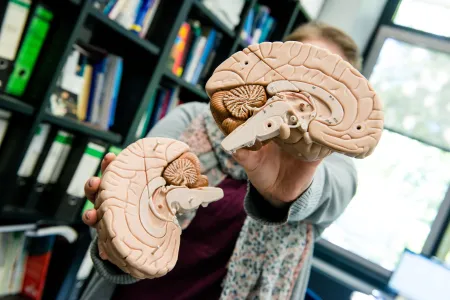
Neuroscience
People Are More Agile Than They Think
When it comes to estimating one’s own mobility, the brain turns out to be notoriously pessimistic.
People can bend their wrist further than they think. This is what researchers from Ruhr University Bochum, Germany, and the Université catholique de Louvain, Belgium, have discovered. They asked 84 people to estimate how far they could move their hand in different directions. The participants systematically underestimated the mobility of their wrist. “The brain obviously doesn't have an accurate image of the body movement limits,” sums up Bochum neuroscientist Dr. Artur Pilacinski. He describes the results together with Antoine Vandenberghe, Gabriella Andrietta and Professor Gilles Vannuscorps in the journal “Communications Psychology” from November 1, 2024.
People have a distorted body schema
“Previous studies by other groups have already shown that people have a distorted body schema,” explains Pilacinski. “For example, they systematically underestimate the weight or size of their hands. We were interested in whether there is a similar bias for body movements.”
The researchers examined wrist movements in four different directions. Some of the participants were asked to mentally visualize the various hand movements. They indicated on an angular ruler how far they expected to be able to move. The other participants were shown various positions on the angular ruler and had to decide for each of them whether or not they could reach it by bending their wrist. Finally, the actual wrist mobility was measured in the four directions: Participants had to bend their hand inwards and outwards towards their forearm and tilt their wrist towards their thumb or little finger.
Systematically underestimated
For three of these four hand movements, there was a significant difference between the assumed and actual mobility. The participants underestimated their mobility by an average of at least ten degrees. The only exception was the movement towards the thumb. “Presumably because the wrist is the least flexible in this direction and the difference between assumed and actual mobility was too small to be measurable with our method,” explains Artur Pilacinski.
As the study reveals, people are unaware of the true limits of their mobility. “We can only speculate about the reasons,” says Pilacinski. “The most likely explanation is that this bias protects us from injury because it prevents us from overshooting. This way, we may have to make small corrections during our movements, but that protects our muscles, tendons and ligaments.”
The researchers expect a potential benefit of this finding for sports or rehabilitation, where people are deliberately pushed to the limits of their mobility. Knowing that the presumed limit is not the real limit could help to better imagine our movement limits and ultimately achieve better mobility.
